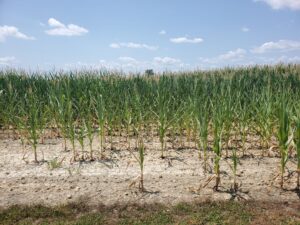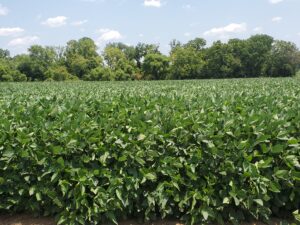Thursday, August 19, 2021, 4:00 pm (meet at the shelter near the parking lot)
Rutgers Agricultural Research & Extension Center
121 Northville Rd., Bridgeton, NJ (Upper Deerfield)
4:00 – Discussion
Strawberry Soil Fertility – Bill Hlubik, Middlesex County Agricultural Agent
Silicon, Sulfur and Manganese Nutrition for Protecting Cucurbits from Powdery Mildew – Joe Heckman, PhD, Specialist in Soil Fertility
Rutgers Covid-19 Project – Rick VanVranken, Atlantic County Agricultural Agent
Sustainable Agriculture and Research and Extension (SARE) Farmer Grants a Way to Try New Things and Cover the Cost – Michelle Infante-Casella, Gloucester County Agricultural Agent
4:30 – Tour
Evaluation of Bell Pepper Varieties and Breeding Lines for Bacterial Leaf Spot and Phytophthora Blight Management – Wes Kline, PhD, Cumberland County Agricultural Agent
Cover Crops for Between Beds in Plasticulture Cucumbers – Thierry Besancon, PhD, Extension Weed Specialist for Specialty Crops
Update on Breeding for Fusarium Wilt Resistance in Basil – Kathryn Homa, IR-4 Program
Anthracnose Control in Peppers – Andy Wyenandt, PhD, Specialist in Vegetable Pathology
Phytophthora Blight Control Through the Use of Fungicides – Andy Wyenandt, PhD, Specialist in Vegetable Pathology
Control of Basil Downy Mildew with Organic Materials – Andy Wyenandt, PhD, Specialist in Vegetable Pathology
The Effects of Simulated Dicamba Drift on Cucumber and Snap Bean Yields – Maggie Wasacz, Rutgers Graduate Student
Sweet Corn Demonstrating the Differences/Effectiveness of Non-Bt, Providence Bt, and Attribute II Bt Varieties for Resistance to Corn Earn Worm and Fall Army Worm – Joe Ingerson-Mahar, PhD, Vegetable IPM Coordinator
Update on Industrial Hemp Research in South Jersey – Raul Cabrera, Specialist in Nursery Production and Management
PESTICIDE CREDITS UNITS
1A Agriculture Plant 9
10 Demonstration and Research 9
PP2 Private Applicator 9
Note: face masks and hand sanitizers will be available

 If you can tolerate the smell and feel of corn pollen on your eyelashes, put on a rain coat and go for a walk through your crop to see how the interior of the field is fairing this season. Remember as hay comes off and soybeans are sprayed, the bugs are seeking haven in corn.
If you can tolerate the smell and feel of corn pollen on your eyelashes, put on a rain coat and go for a walk through your crop to see how the interior of the field is fairing this season. Remember as hay comes off and soybeans are sprayed, the bugs are seeking haven in corn.